Experiment with ideas. Test and see which works better. Analyze your data.
These are phrases we often use on this blog. To us, social media marketing is a bit of a science. We recommend testing things, running experiments, and analyzing data — because it worked for us. This experimental mindset has helped us grow our social media results.
But one thing we haven’t done well is to explain the how: how to run social media experiments.
In this post, you’ll learn the six simple steps of running social media experiments. We’ve even included 87 ideas, which you can start testing immediately.
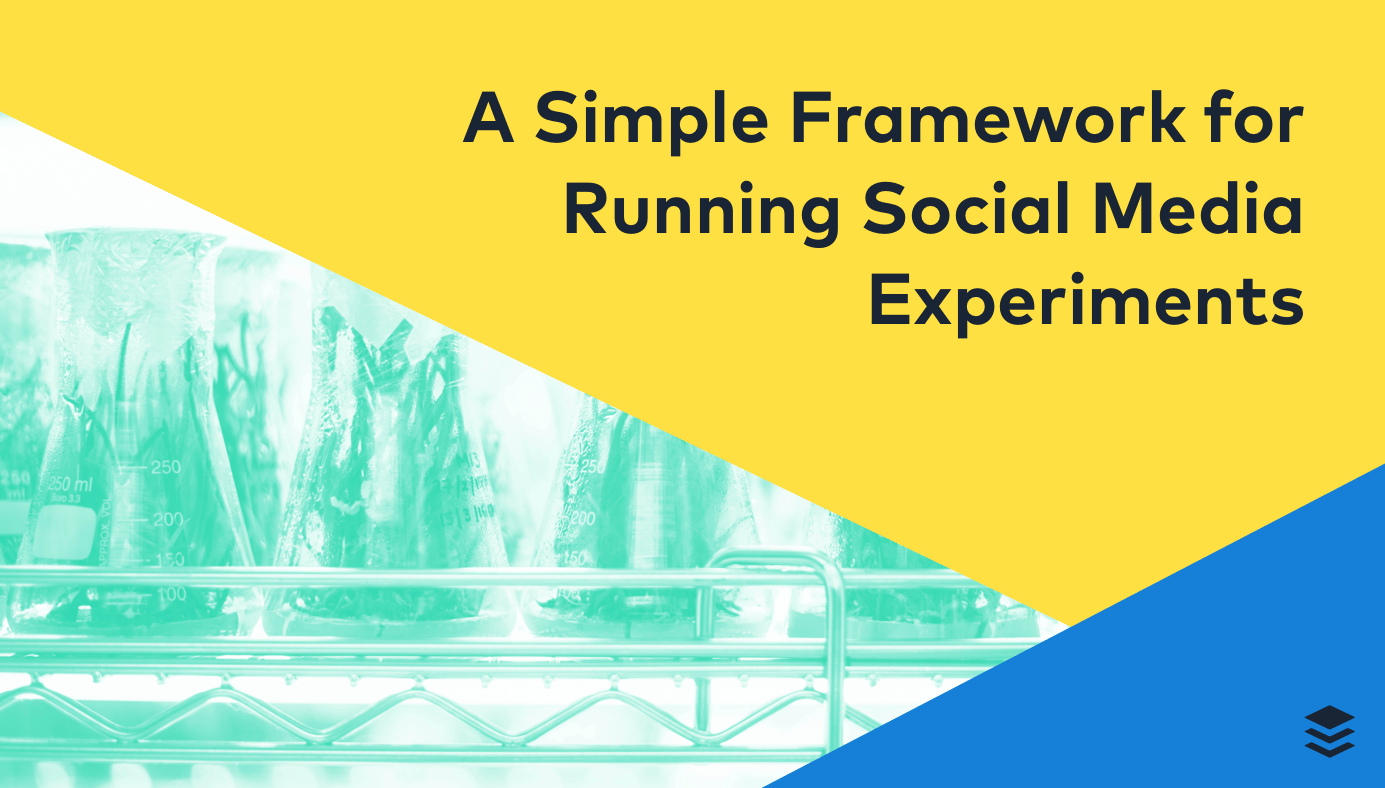
How to run social media experiments successfully
Running social media experiments can be hard when you’re not sure where to start and where to head to. Here’s a step-by-step guide to help you hit the ground running.
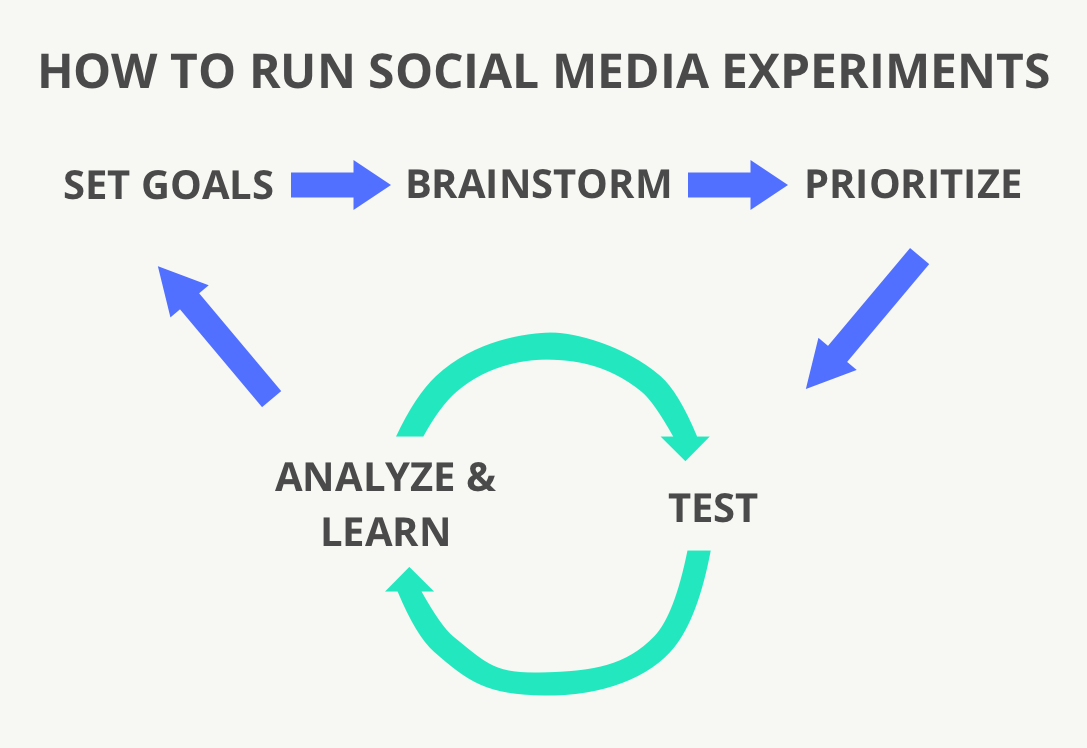
Before we dive into the guide, here’s a quick caveat: social media experiments are not perfect or entirely scientific. Some factors are out of our control, such as organic reach since it’s determined by the social media algorithms.
This doesn’t mean we wouldn’t get meaningful results (it has worked for us and many others); it’s just good to be mindful of this while running your experiments.
1. Set goals
As with most planning, it’s crucial to start by setting your goals. Why?
Imagine the following situation. Both social media posts are sharing the same blog post with a different headline.
Post A received 100 Likes, 100 shares, 10 clicks, and 5,000 impressions.
Post B received 10 Likes, 10 shares, 100 clicks, and 1,000 impressions.
Which post do you think is better?
I think it depends on your goals! If you think social media is for engagement, you’ll likely prefer Post A. But if you think social media is for driving traffic, you’ll probably prefer Post B instead.
Here’s a list of social media goals you could choose from:
- Reach (or impressions)
- Engagement (Likes, comments, and shares)
- Following
- Traffic from social media
- Leads from social media
- Revenue from social media
For us, our overarching goal for social media is engagement and brand-building. (Here’s why.) So we focus more on our social media reach, engagement, and following than traffic, leads, or revenue from social media.
Having said that, each social media post can sometimes have its own micro-goal. For example, while our overall social media goal is engagement and majority of our posts are meant for generating engagement, we have some posts that are meant for driving traffic, such as this and this.
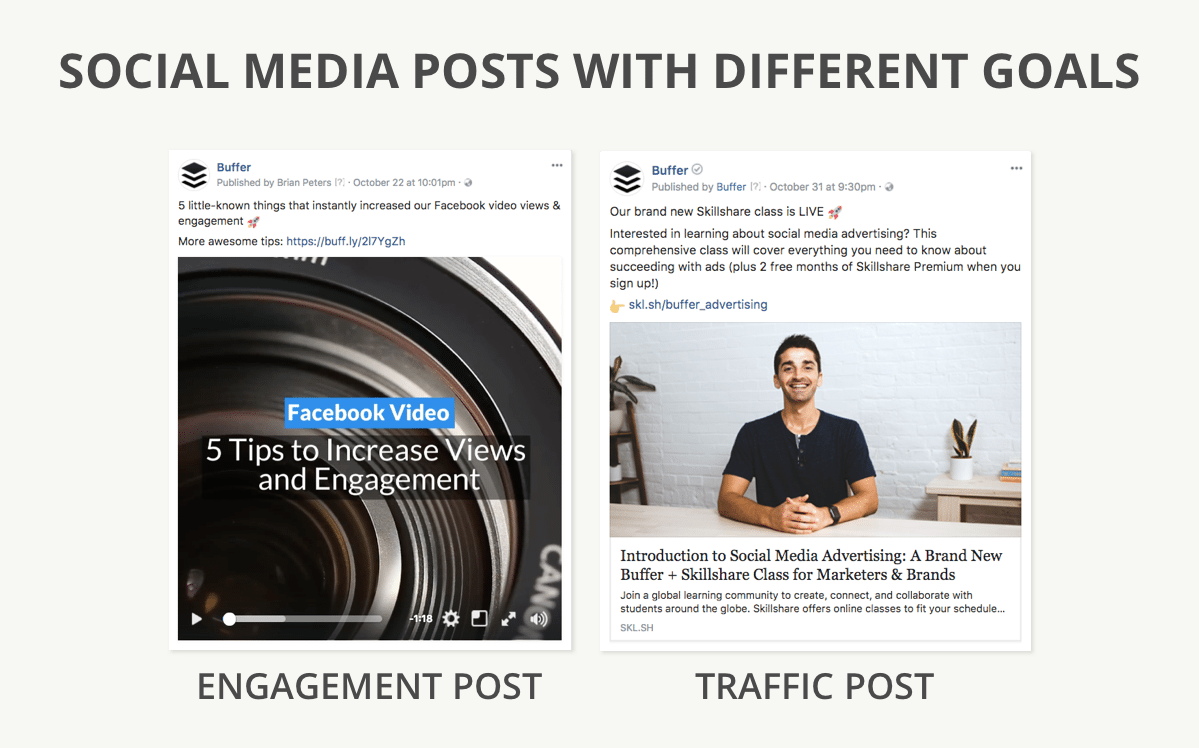
2. Brainstorm ideas
Once you have set your goals, you are ready to come up with ideas. While you are thinking of new ideas, it’ll be good if you could form a hypothesis around the idea, too. This is the format we like to use
7:
If we (experiment idea),
then (expected results),
because (assumptions).
If we curate top content from other Facebook Pages,
then we can grow our Facebook reach by 10%,
because they are content proven to be popular.
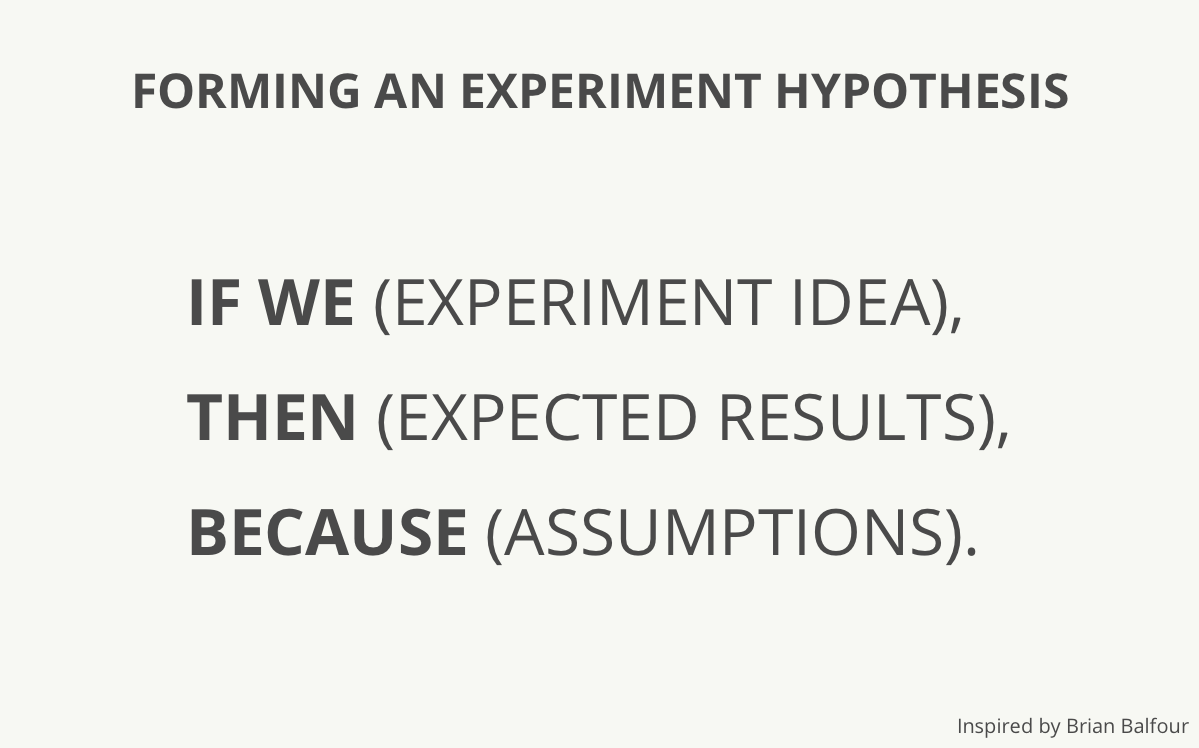
You could also keep it as simple as “Curating top third-party content will increase our reach on Facebook.”
Here are a few suggestions for coming up with social media experiment ideas:
Read blog posts for ideas
This is my favorite method because there’s so much written about social media marketing every day. Listicles and case studies of successful social media tactics can be a great source of inspiration for experiment ideas.
If you want somewhere to get started, we have quite a few blog posts with experiment ideas in them:
- Get Over Your Creativity Block With These 20 Social Media Content Ideas
- 20 Creative Ways to Use Social Media for Storytelling
- 7 Powerful Social Media Experiments That Grew Our Traffic by 241% in 8 Months
- 10 Unique Ideas to Test on Every Social Media Channel (And How to Tell What Works)
- We Made These 10 Social Media Mistakes so You Don’t Have To
There’s also a huge list of 100 social media experiment ideas below. Click here to skip right to it, and feel free to take any of the ideas.
Follow social media trends
The second method is to follow social media trends.
For example, videos are becoming the most popular content format on social media. Facebook has been pushing for videos on its platform for the last few years, and LinkedIn has recently introduced native videos. Our internal data also showed that videos received an average of 873 interactions per post, compared with 279 for photos and 190 for text posts.
So it’ll be a good idea to test videos on your social media profiles.
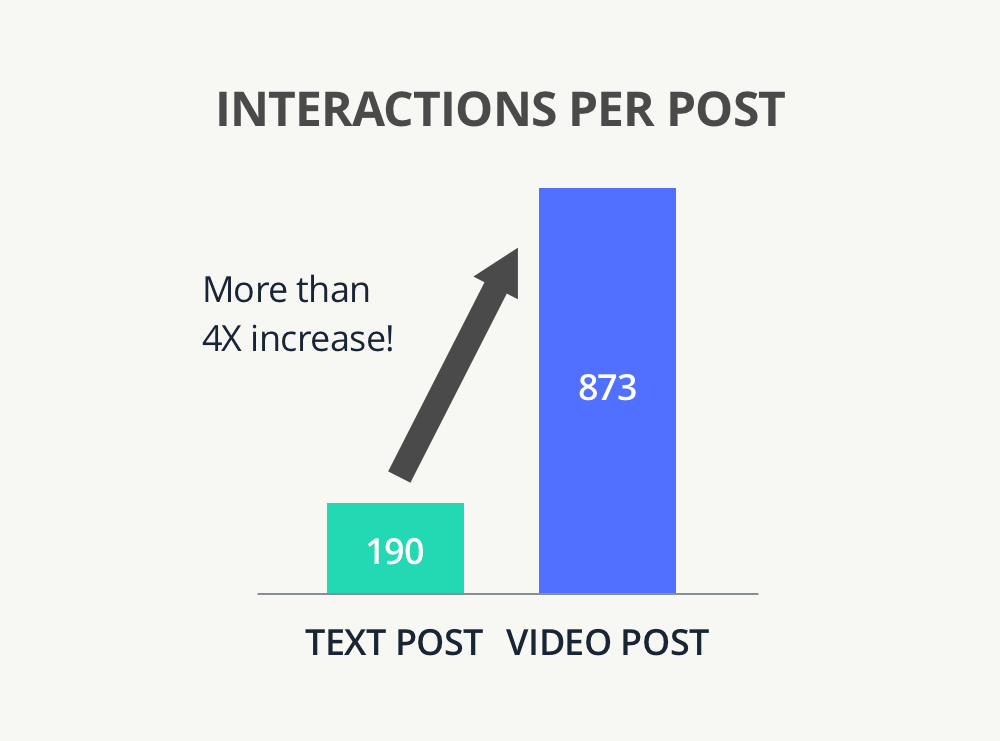
We recently wrote about the 10 major social media trends for 2018, which you might find useful for generating ideas.
What ideas can you think of in light of these trends?
Study industry leaders and competitors
The final method is to watch and learn from the best companies in your industry and your competitors. What have they been doing that is worth trying yourself?
It’s also good to be aware that the ideas that worked for them might not always work for you. You all likely have many differences such as branding, positioning, and audience. But if you think an idea is suitable for your brand, I would say go for it and modify it for your own brand.
There are some free tools you can use to track industry leaders and competitors.
On Facebook, you have Pages to Watch. It allows you to quickly check out the recent top posts of similar Facebook Pages. You can find it at the bottom of the Overview tab in your Page Insights.
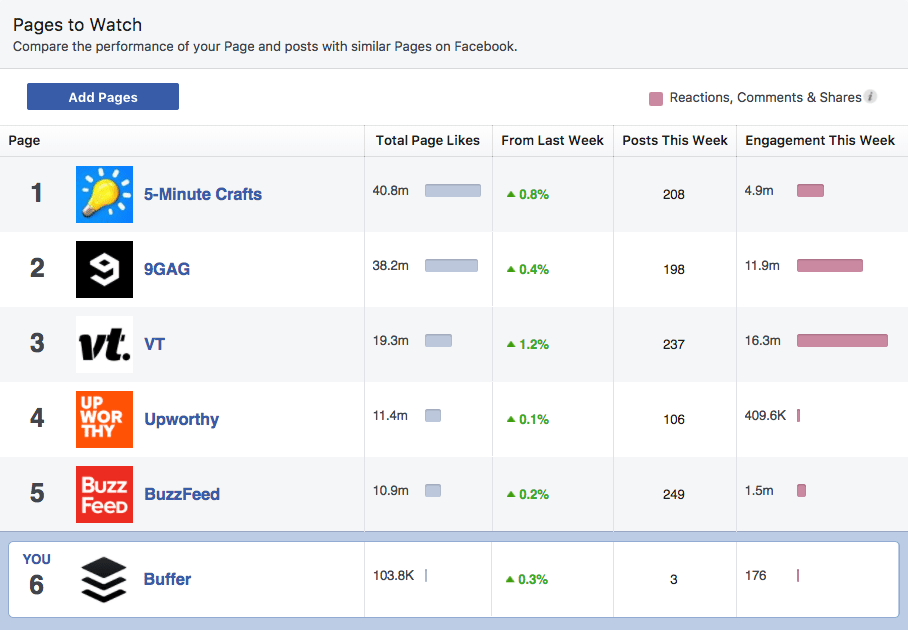
On Twitter, you could add your favorite companies to a Twitter list. To create a Twitter list, click on your profile photo in the upper-right corner and click on “Lists”. Then, click on “Create new list” and fill out the information.
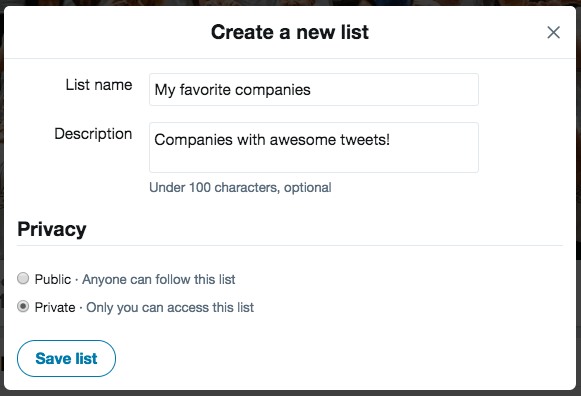
On LinkedIn, you have the Companies to track feature in your Company Page analytics. Clicking on any of the company names will bring you to their Company Page. You can access this section by clicking on Analytics > Followers.
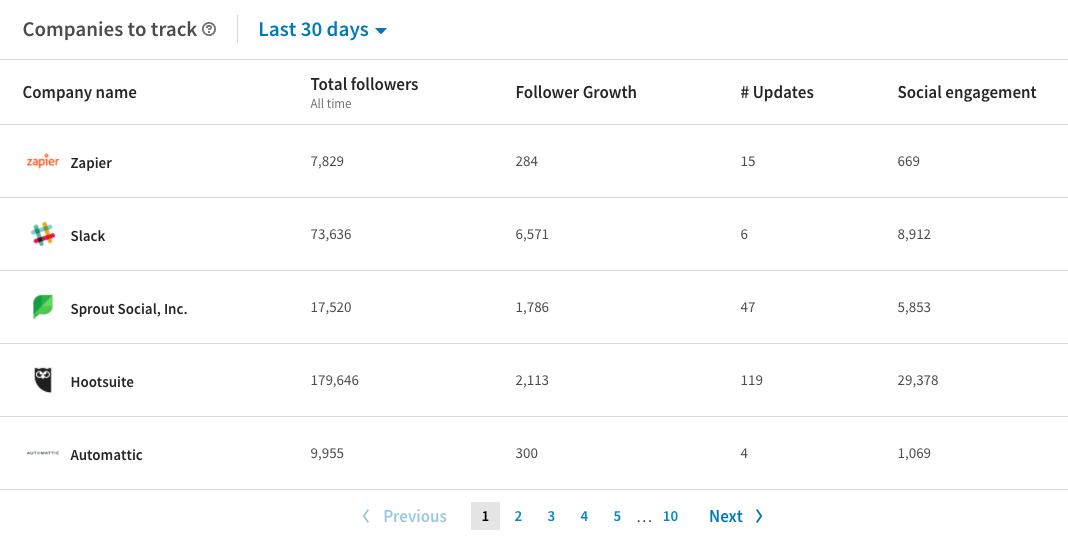
3. Prioritize
The next step is to prioritize your ideas. A prioritization framework we like to use at Buffer is the ICE score by GrowthHackers.
ICE stands for Impact, Confidence, and Ease.
- Impact: The possible impact of the idea on your selected metric (e.g. 10 percent increase in reach)
- Confidence: Your confidence level about the success of the experiment (e.g. three companies have found success with this idea)
- Ease: The number of resources required (e.g. no design or engineering help needed)

For each experiment, give each factor a score from one to 10. The overall score is determined by taking the average of the three scores. You should start with the experiment that has the highest score.
Here are two simple examples of ICE scoring in action:
Experiment A
Curating top third-party content will increase our reach on Facebook.
Impact = 6
Confidence = 8
Ease = 8
Overall = 7.3
Experiment B
Partnering with micro-influencers will grow our Instagram reach.
Impact = 8
Confidence = 4
Ease = 3
Overall = 5
Based on the ICE score, I would run experiment A before experiment B.
While this process can be a little time-consuming at the start, it’s important. It’ll help you think through the experiment details (such as what metric to track) and maximize your impact with the resources you have.
After a while, you should be able to build up a good intuition about the potential of ideas without having to score every single idea.
4. Test
Now you’re ready to test your top ideas!
There are a few things you want to be mindful when testing.
(Ideally) test one thing at a time to understand what’s making the difference. For example, if you want to test your copy as an experiment, it’ll be best to keep the multimedia the same. Otherwise, you won’t know if the copy or the multimedia caused one post to outperform the other.
Look at the right metrics to measure the results of your experiment. This is where the goals you’ve set will be helpful. For instance, if you want to maximize your social media reach, you would pick reach or impressions over clicks.
Run one experiment at a time for a start. Similar to the first point above, doing so lets you know which experiment moved the needle. (When you are feeling advanced, you could run multiple experiments concurrently as long as you understand how they will affect the metrics.)
Run each experiment for at least a week for smaller experiments. This isn’t entirely scientific but I believe a week is sufficient for the results to be seen. For bigger experiments such as shifting your social strategy to posting more videos, you might want to test it for a month to a quarter. The bigger the experiment, the longer it should be tested.
Good luck!
5. Analyze and learn
Finally, you’ll want to analyze your results to see if your experiment has been a success. Here are some questions you could ask yourself:
- Did it achieve the results I had expected? Why?
- Did any other factors contribute to the success or failure?
- Can I learn anything else from this experiment?
To help you with your experiment tracking, I’ve created a simple tracking template: Social Media Experiment Tracking. Feel free to make a copy and modify it to your liking.
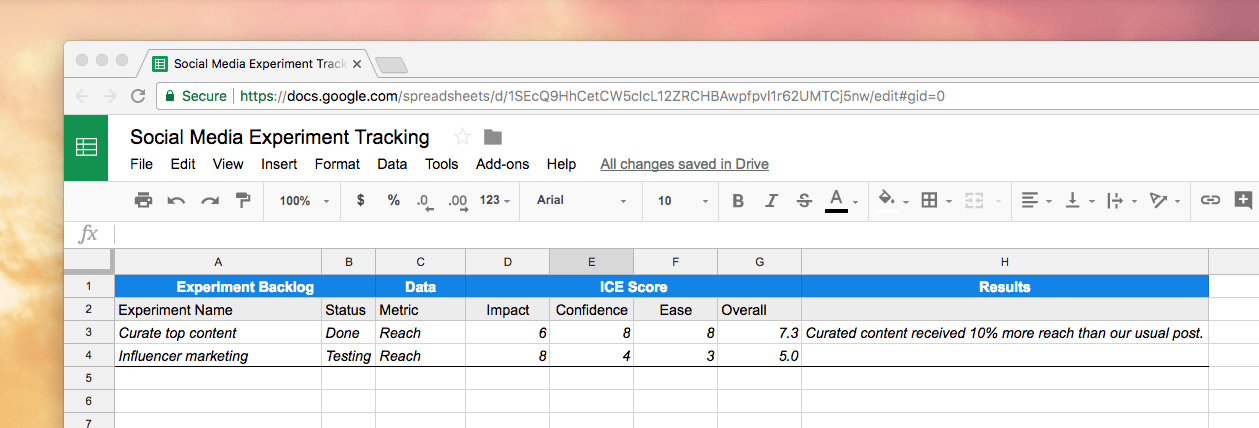
When running scientific experiments, it’s important to look at the statistical significance of the results — to ensure that the result isn’t a fluke and can be repeated successfully. But for social media experiments, it might not always be feasible. That’s because your sample size (impressions of a post) isn’t within your control.
My non-scientific recommendation here is to repeat the experiment a few times and see if the result remains the same. If the result can be repeated, you can consider turning the experiment into a regular part of your social media marketing.
6. Repeat
Congratulations! You have just planned, run, and analyze a social media experiment!
Whether you had a successful experiment or not, it’ll be great to repeat step four (test) and five (analyze and learn) continuously. Then once a quarter, you could take a step back and look at the bigger picture again. Your social media goals might have changed, or there might be new social media tactics to try.
Re-evaluate your goals, brainstorm new ideas, and test them. All the best!

87 social media experiment ideas
To help you get started with running social media experiments, here’s a mega list of ideas for you to try. Some are low-hanging fruits while others might require much effort:
Posting time
- Post when your followers are online
- Post when your followers are offline
- Post during commute times
- Post during lunch time
- Post on the weekends
Posting frequency
- Post less
- Post more
Headlines and copy
- Write short headlines
- Write long headlines
- Write really long headlines (or stories)
- Use social proof in your copy
- Add emojis
- Customize your post for each social media platform
Content
- Post questions
- Ask for opinions on a trending topic
- Share top industry news
- Share thought-leadership articles
- Share interesting, relevant statistics
- Share inspiration quotes
- Post interviews
- Host a live Q&A
- Post behind-the-scenes videos
- Share your company culture
- Re-use top posts
- Poll your audience
- Retweet a mention every day
- Create a branded hashtag
- Host a giveaway and invite people to comment
- Host a giveaway and invite people to tag a friend
- Host a giveaway and invite people to share your post
- Host a giveaway with other brands
- Celebrate national or international events
- Create a huge image on your Instagram profile with multiple posts
- Create a Twitter moment
- Create a Slideshare presentation (and share it)
Multimedia
- Curate third-party content
- Post self-explanatory images
- Post photos of your product
- Post infographics
- Post GIFs
- Post audio recordings
- Post slideshow videos
- Post tutorial or tips videos
- Post a 360 photo or video
- Go live
- Livestream an event
- Live-tweet an event
Videos
- Upload videos directly to social media platforms (vs YouTube)
- Create landscape videos
- Create square (or letterbox) videos
- Create portrait videos
- Create short 10-15s videos
- Create long 20-30min videos
- Add captions to videos
- Add music to videos
- Use a cover video for Facebook
Ads
- Boost your top posts
- Use social proof in your copy
- Use a photo of a person
- Test the carousel ad format
- Test the video ad format
- Test stories ads
- Test Messenger ads
- Test Snapchat Geofilters
- Test Snap Ads
- Sequence your Facebook ads
Collaboration
- Share user-generated content
- Share customer stories
- Sponsor a micro-influencer (sponsored posts)
- Create a piece of content with a micro-influencer and share it together
- Host a social media takeover
- Do a social swap
- Host social media events with another brand
- Host a roundtable with experts in your industry
- Hire an agency for a social media campaign
Community
- Start a Twitter chat
- Create (and link) a Facebook Group
- Create a LinkedIn Group
Others
- Pin a post
- Reply to all mentions
- Use Facebook Messenger
- Create a Facebook Messenger bot
- Use a social media management tool
- Use a social media analytics tool
- Use Facebook’s preferred audience feature
- Offer time-limited discounts
- Ask your CEO (or a colleague that is well-known in your industry) to share your posts

How do you run social media experiments?
Having a framework for running social media experiments can be very helpful. Here’s one I like (though you can tweak it however much you like):
- Set goals
- Brainstorm
- Prioritize
- Test
- Analyze and learn
- Repeat
I’m curious about how you run your social media experiments. Do you use a framework or system? Do you use any tools to help you with it? Let’s chat in the comments section below.
—
The amazing featured image is by chuttersnap, taken from Unsplash.
Try Buffer for free
190,000+ creators, small businesses, and marketers use Buffer to grow their audiences every month.




